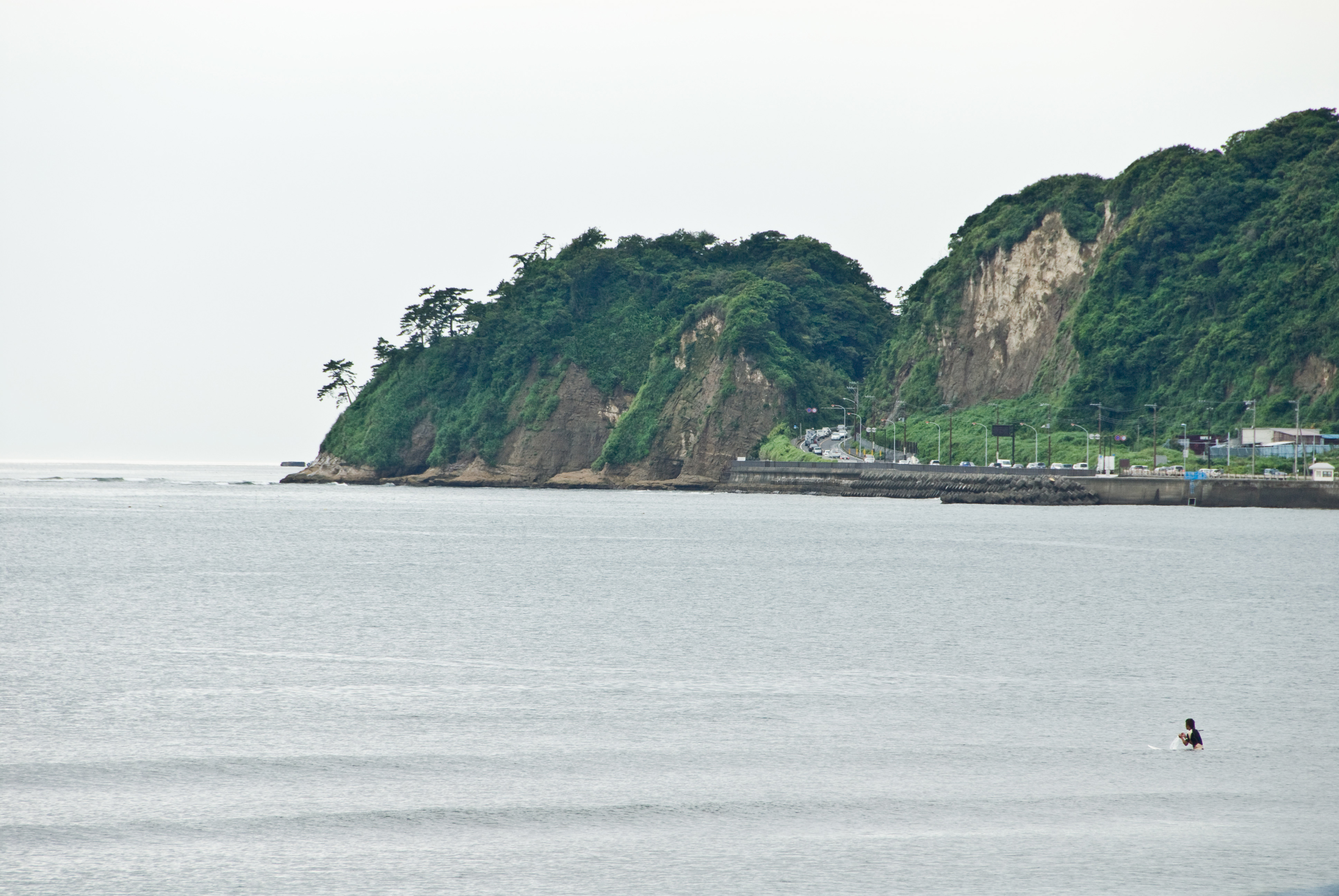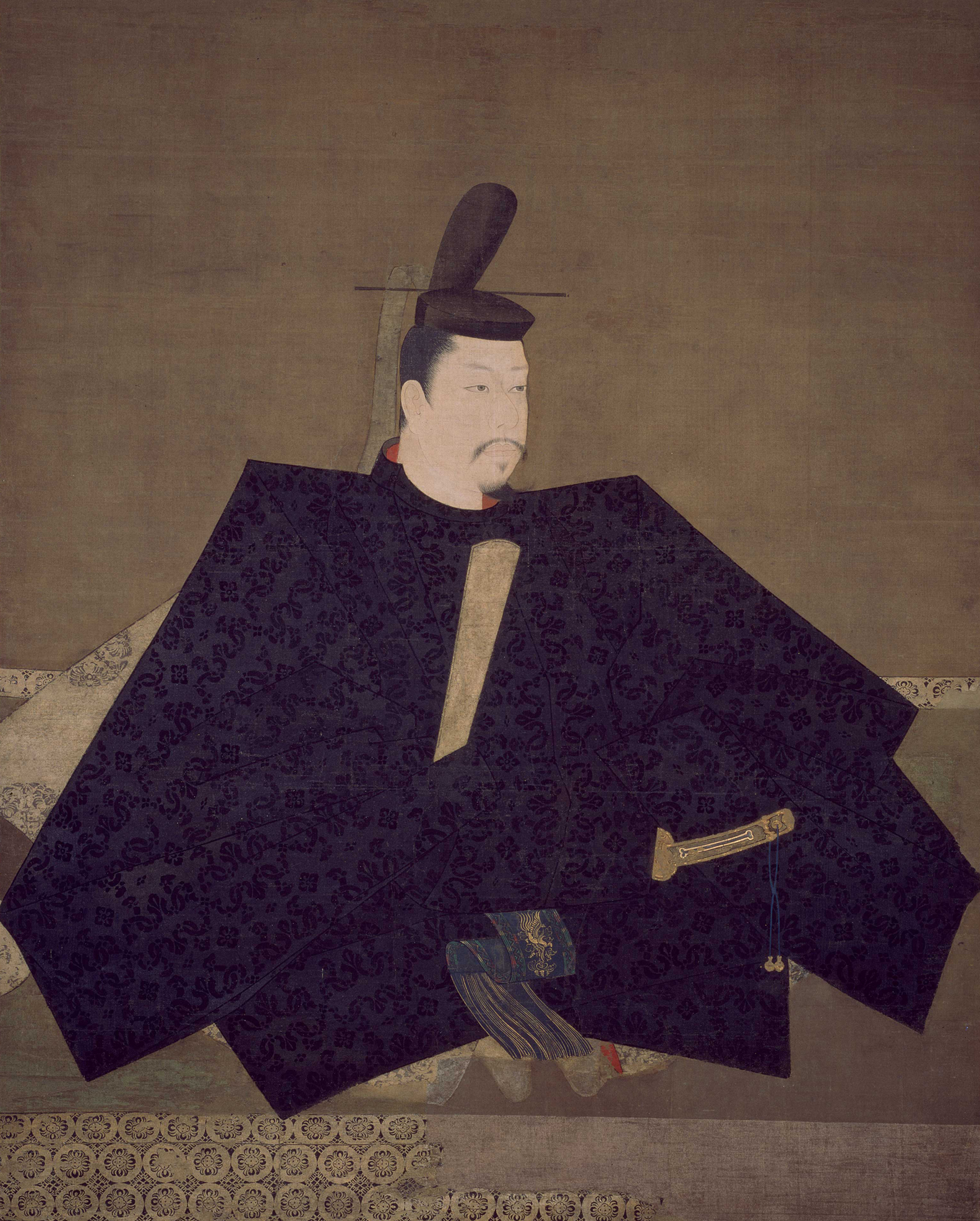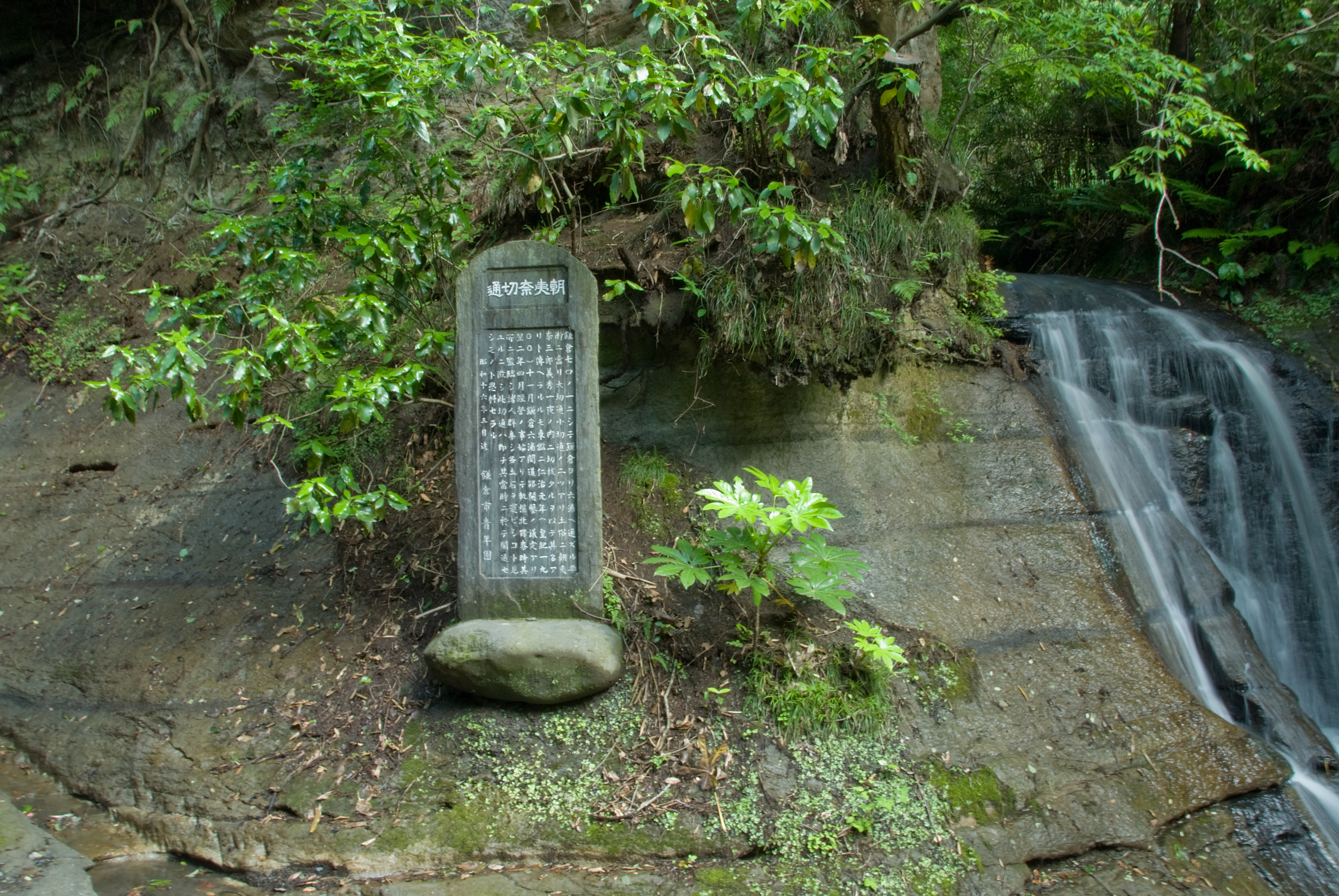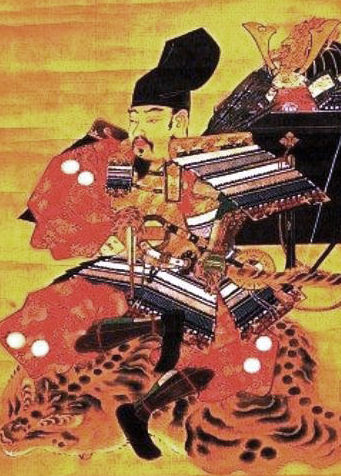|
Inamuragasaki
is a cape at the western end of Yuigahama (Beach) in Kamakura, Kanagawa, Kamakura, Kanagawa Prefecture, Japan. The cape divides Yuigahama from Shichirigahama (Beach) and Enoshima. Its name seems to stem from its shape, similar to a stack of rice at harvest time (an ). At its foot on the Shichirigahama side there is a park, the . History Because the ancient Tōkaidō (road), Tōkaidō highway passed along the sea south of this cape before heading to the Miura Peninsula, before the opening of the Kamakura's Seven Entrances#The Gokuraku Pass, Gokuraku Pass Inamuragasaki was the traditional point of entry to Kamakura at the time of the Kamakura shogunate. Now crossed by a road (see photo), it used to be impassable by land and was therefore one of the natural defenses that made Kamakura an impregnable fortress. For this reason, it appears often in the historical record. It is first mentioned in the Genpei Jōsuiki because the Miura clan in 1180 crossed it twice to go rescue Minamoto ... [...More Info...] [...Related Items...] OR: [Wikipedia] [Google] [Baidu] |
Shichirigahama
is a beach near Kamakura, Kanagawa Prefecture, Japan, which goes from Koyurugimisaki Cape, near Fujisawa, Kanagawa, Fujisawa, to Inamuragasaki Cape, west of Kamakura.Kamakura Shōkō Kaigijo (2008:34) Since from it one could enjoy a clear view of both Mount Fuji and Enoshima at the same time, during the Edo period it was popular as a subject for ''ukiyo-e''. For example, famous ''ukiyo-e'' artists Hiroshige and Hokusai both include it in their 36 Views of Mount Fuji. Its dark sands are rich in iron ore which allowed Kamakura to become a florid center for the production of swords and knives. Its name is usually translated into English as "Seven Ri Beach", the ''ri'' being a unit of measurement. Unlike its easterly neighbor Yuigahama, its floor drops too quickly, so it is not very popular as a sea resort, but surfers are present in every season. Since 1939 it is administratively part of the City of Kamakura. The area is served by the Enoshima Electric Railway, or Enoden, which conne ... [...More Info...] [...Related Items...] OR: [Wikipedia] [Google] [Baidu] |
Kamakura, Kanagawa
, officially , is a Cities of Japan, city of Kanagawa Prefecture in Japan. It is located in the Kanto region on the island of Honshu. The city has an estimated population of 172,929 (1 September 2020) and a population density of 4,359 people per km2 over the total area of . Kamakura was designated as a city on 3 November 1939. Kamakura was Japan's ''de facto'' capital when it was the seat of the Kamakura shogunate from 1185 to 1333, established by Minamoto no Yoritomo. It was the first military government in Japan's history. After the downfall of the shogunate, Kamakura saw a temporary decline. However, during the Edo period, it regained popularity as a tourist destination among the townspeople of Edo (Tokyo), Edo. Despite suffering significant losses of historical and cultural assets due to the 1923 Great Kantō earthquake, Great Kantō Earthquake in 1923, Kamakura continues to be one of the major tourist attractions in the Kanto region, known for its historical landmarks such as ... [...More Info...] [...Related Items...] OR: [Wikipedia] [Google] [Baidu] |
Kamakura's Seven Entrances
The city of Kamakura, Kanagawa in Japan, is closed off on three sides by very steep hills and on the fourth by the sea: before the construction of several modern tunnels and roads, the so-called Seven Entrances (''Nana-guchi''), or (all artificial) were its main links to the rest of the world.Kamakura Shōkō Kaigijo (2008: 54-56) The city was therefore a natural fortress and, according to the Azuma Kagami, it was chosen by Minamoto no Yoritomo as his base specifically for this reason. Historical Landmark - Asaina Pass (June 5, 1969) In 1240 the Kamakura shogunate ordered works to improve communications between the city and the important center of Mutsuura, and construction was started in April of the following year. The Shikken Hōjō Yasutoki himself directed the work and carried stones and dirt with his horse to speed it up. Mutsuura was then a center of salt production and an important port for the distribution of goods not only to and from Kantō centers like Awa Province ... [...More Info...] [...Related Items...] OR: [Wikipedia] [Google] [Baidu] |
Yuigahama
is a beach near Kamakura, a city in Kanagawa Prefecture, Japan. The relation between the beach and its neighboring areas is complex. Although Yuigahama is legally the entire 3.2 km beach that goes from Inamuragasaki, which separates it from Shichirigahama, to Zaimokuza's Iijima cape, which separates it from Kotsubo and the Miura Peninsula, the name is customarily used to indicate the portion west of the Namerigawa river, while the eastern half is called .Kamakura's Official Textbook for Culture and Tourism (2008:33) This is the reason why, although the beach gives its name to only the west part of the beachside community, traces of the name Yuigahama can be found also in Zaimokuza (for example in Moto Hachiman's official name, Yui Wakamiya). The center of Yuigahama came legally into being between 1964 and 1965 and was named after the beach. Today's Yuigahama was until then divided between Zaimokuza, Ōmachi, and Hase. There are different theories about the origin of the ... [...More Info...] [...Related Items...] OR: [Wikipedia] [Google] [Baidu] |
Kamakura Kaidō
is the generic name of a great number of roads built during the Kamakura period which, from all directions, converged on the military capital of Kamakura, Kanagawa, Kamakura, Kanagawa Prefecture, Japan.Nihon Rekishi Chimei Taikei The term itself however was created probably during the Edo period to mean simply any old road going to Kamakura; it is used for example in the Fudokikō. The famous Tōkaidō (road), Tōkaidō highway which connects Kyoto to Kamakura can therefore also be considered a Kamakura Kaidō. Texts like the Taiheiki and the Azuma Kagami see things from a Kamakura-centric perspective and therefore use for the same roads individual names deriving from their destination, for example Kyōto Ōkan or the generic term .Kamakura Shōkō Kaigijo (2008:53–54) Today, modern paved roads that approximately follow one of the routes of an Old Kamakura Kaidō are named either Kamakura Kaidō, as Tokyo Prefecture Machida Route 18, or . The three main routes The three main roads ... [...More Info...] [...Related Items...] OR: [Wikipedia] [Google] [Baidu] |
Nitta Yoshisada
also known as Minamoto no Yoshisada was a samurai lord of the Nanboku-chō period Japan. He was the head of the Nitta clan in the early fourteenth century, and supported the Southern Court of Emperor Go-Daigo in the Nanboku-chō period. He famously marched on Kamakura, besieging and capturing it from the Hōjō clan in 1333. Later, he fought the Ashikaga brothers on the Emperor's behalf in a see-saw campaign which saw the capital change hands several times. After a peaceful compromise was agreed, Yoshisada was entrusted with two royal princes. At the siege of Kanegasaki (1337), both princes were killed, along with Yoshisada's son, although Yoshisada was able to escape. He committed seppuku when his horse was killed at the siege of Kuromaru. Early life Yoshisada was born in 1301, the eldest son of Nitta Tomouji. He succeeded his father and became the lord of Nitta Manor in Kōzuke Province in 1317. At this time, he also became the head of the Nitta clan. Yoshisada courted a da ... [...More Info...] [...Related Items...] OR: [Wikipedia] [Google] [Baidu] |
Amaterasu
, often called Amaterasu () for short, also known as and , is the goddess of the sun in Japanese mythology. Often considered the chief deity (''kami'') of the Shinto pantheon, she is also portrayed in Japan's earliest literary texts, the () and the (720 CE), as the ruler (or one of the rulers) of the heavenly realm Takamagahara and as the mythical ancestress of the Imperial House of Japan via her grandson Ninigi. Along with two of her siblings (the moon deity Tsukuyomi and the impetuous storm-god Susanoo) she ranks as one of the "Three Precious Children" (, ), the three most important offspring of the creator god Izanagi. Amaterasu's chief place of worship, the Grand Shrine of Ise in Ise, Mie Prefecture, is one of Shinto's holiest sites and a major pilgrimage center and tourist spot. As with other Shinto ''kami'', she is also enshrined in a number of Shinto shrines throughout Japan. Name The goddess is referred to as ''Amaterasu Ōmikami'' ( / ; historical orthogr ... [...More Info...] [...Related Items...] OR: [Wikipedia] [Google] [Baidu] |
Taiheiki
The (Chronicle of Great Peace) is a medieval Japanese historical epic (see '' gunki monogatari'') written in the late 14th century and covers the period from 1319 to 1367. It deals primarily with the Nanboku-chō, the period of war between the Northern Court of Ashikaga Takauji in Kyoto, and the Southern Court of Emperor Go-Daigo in Yoshino. Original work The latest English translation consists of 12 chapters of the 40-chapter epic, and spans the period from Go-Daigo's accession in 1318 (when Takauji was still a minor vassal of the Kamakura shogunate's Hōjō clan), through Takauji's betrayal of the Hōjō, and Go-Daigo's fall and expulsion by Takauji in 1333, to his return to Kyoto in 1338. Go-Daigo, unlike many of the emperors before and after him, sought to supersede the power of the ''shōguns'', and to actually rule in addition to reigning in name. Thus began a series of battles, both military and political, as the Fujiwara family, who dominated the Imperial regency f ... [...More Info...] [...Related Items...] OR: [Wikipedia] [Google] [Baidu] |
Ise Shrine
The , located in Ise, Mie Prefecture of Japan, is a Shinto shrine dedicated to the solar goddess Amaterasu Ōmikami and the grain goddess Toyouke-hime (Toyouke Omikami). Also known simply as , Ise Shrine is a shrine complex composed of many Shinto shrines centered on two main shrines, and . The Inner Shrine, Naikū (also officially known as "Kōtai Jingū"), is dedicated to the worship of Amaterasu and is located in the town of Uji-tachi, south of central Ise, where she is believed to dwell. The shrine buildings are made of solid cypress wood and use no nails but instead joined wood. The Outer Shrine, ''Gekū'' (also officially known as "Toyouke Daijingū"), is located about six kilometers from Naikū and dedicated to Toyouke-Ōmikami, the god of agriculture, rice harvest and industry. Besides Naikū and Gekū, there are an additional 123 Shinto shrines in Ise City and the surrounding areas, 91 of them connected to Naikū and 32 to Gekū. Purportedly the home of the Sacred M ... [...More Info...] [...Related Items...] OR: [Wikipedia] [Google] [Baidu] |
Hōjō Clan
The was a Japanese samurai family who controlled the hereditary title of '' shikken'' (regent) of the Kamakura shogunate between 1203 and 1333. Despite the title, in practice the family wielded actual political power in Japan during this period compared to both the Kamakura shoguns, or the Imperial Court in Kyoto, whose authority was largely symbolic. The Hōjō are known for fostering Zen Buddhism and for leading the successful opposition to the Mongol invasions of Japan. Resentment at Hōjō rule eventually culminated in the overthrow of the clan and the establishment of the Ashikaga shogunate. History Bloodline The Hōjō are alleged to have been an offshoot of the Taira of the Kanmu branch, originating in Izu Province. On the other hand, modern theories question whether the Hōjō clan was really descended from the Taira clan. They gained power by supporting the defeat of the Taira by supporting the warlord Minamoto no Yoritomo in the Genpei War through both milit ... [...More Info...] [...Related Items...] OR: [Wikipedia] [Google] [Baidu] |








